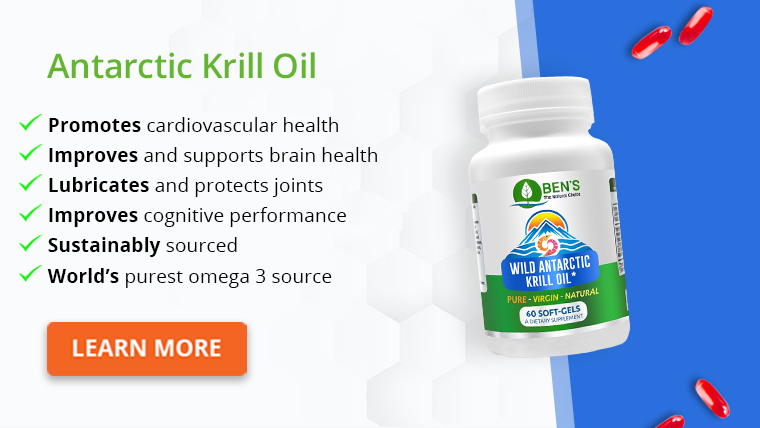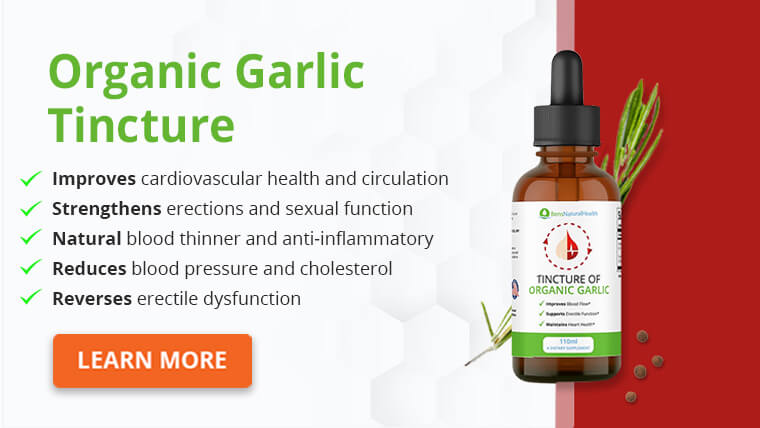None of us are immune to developing illness and disease, but there are steps you can take to reduce your risk.
The first place to start is your diet; like Hippocrates wisely said, “Let food be thy medicine and medicine be thy food.”
How can you best support your health and wellness through your diet?
You can start by incorporating nutrient-dense foods – also known as superfoods – into your daily meals and snacks.
What are superfoods, and how can they help you with your health journey?
In this article, we’ll review ten superfoods and explain how each one can benefit your health and reduce disease risk.
What is a superfood?
A superfood is a nutrient-rich food considered to be especially beneficial for health and well-being.
The interesting thing about superfoods is that there aren’t specific guidelines on what makes a specific food a superfood – instead, it’s a bit of a subjective term.
That being said, there are several foods that most health professionals (like dietitians) would consider to be superfoods.
These foods provide important nutrients that offer protective health benefits, such as helping to reduce the risk of disease and illness.
Superfoods are almost always whole foods (some foods can be formulated using “superfood ingredients”, but they might not be considered a superfood on their own, depending on who you ask).
Superfoods shouldn’t contain any added ingredients like added sugar, salt, or preservatives.
Get Your FREE Diabetes Diet Plan
- 15 foods to naturally lower blood sugar levels
- 3 day sample meal plan
- Designed exclusively by our nutritionist
11 best superfoods to add to your diet
1) Pumpkin seeds
All nuts and seeds are great sources of nutrients like fiber, healthy unsaturated fats, and protein. So what makes pumpkin seeds stand out among the rest?
Pumpkin seeds are one of the best sources of magnesium, a mineral that many people are deficient in.
Magnesium plays several important roles in your health, including blood pressure regulation, muscle and nerve function, and even blood sugar regulation.
Magnesium deficiency is linked with insulin resistance and type 2 diabetes. While we can’t know for certain if magnesium deficiency causes insulin deficiency outright, we do know that magnesium helps improve insulin sensitivity and plays a role in blood sugar regulation.
One cup of pumpkin seeds provides around 40% of the daily value for magnesium, which is more than any other type of nut or seed!
Pumpkin seeds are also a great source of plant-based iron, a nutrient that helps build a protein in red blood cells that transports oxygen.
Meats are generally the best sources of iron, but that poses a problem for people who are anemic from iron deficiency and don’t eat meat.
One cup of pumpkin seeds provides around 11% of the daily value for iron, which means it qualifies as a good source of iron per the United States Food and Drug Administration’s labeling guidelines.
2) Salmon
Salmon will make almost anyone’s subjective list of superfoods, and for good reasons. Salmon is one of the richest sources of omega-3 fatty acids, a type of fat known for its numerous health benefits.
Some of the known benefits of eating enough omega-3 fats include:
- Helping to combat inflammation
- Reducing your risk of cardiovascular disease
- Reducing blood clot risk
- Lowering your risk of developing certain types of diseases like Alzheimer’s disease and certain types of breast cancer
Salmon is also a rich source of protein, an important nutrient for helping build healthy muscle tissue, creating antibodies to help you fight illness, and much more.
A six-ounce portion of wild salmon provides around 1,770 milligrams of omega-3 fatty acids, while the same portion of farmed salmon provides around 4,500 milligrams of omega-3 fatty acids.
Why the discrepancy between omega-3s in wild and farmed salmon? Farmed salmon are fed a higher-fat diet than wild salmon, which increases the fat in their flesh.
3) Leafy green vegetables
Another repeat on many traditional superfood lists, leafy green vegetables pack a lot of nutrition in with few calories, which means you can add as much as you want of them to your plate without worrying if they’re going to put you over any caloric or weight loss goals you might have.
Leafy green vegetables like spinach, kale, and beet greens are great sources of nutrients:
- Folate: also known as vitamin B9, is essential for healthy neural tube development in growing fetuses. Not getting enough folate in your diet during pregnancy can lead to problems like premature birth, birth defects, and low birth weight.
- Beta carotene: Beta carotene is an antioxidant, which means it helps prevent cells from damage that can lead to inflammation and disease. While beta carotene is prevalent in orange-colored produce like carrots and pumpkins, it’s also present in leafy greens.
- Vitamin C: You might associate vitamin C with citrus fruits, but it’s also packed into leafy green veggies! Vitamin C aids in immune health, wound healing, and the formation of collagen, the protein found in your hair, skin, and nails. One cup of spinach provides around 14% of the daily value for vitamin C, which is impressive considering how few spinach leaves it takes to get to one cup!
4) Sweet potatoes
Sweet potatoes are also a great source of beta carotene and vitamin A, which is important for healthy vision as well as supporting reproductive and immune health.
One cup of cubed sweet potatoes provides nearly 19,000 IU of vitamin A, which is over 500% of the daily value!
Sweet potatoes are also a great source of fiber, which helps promote a sense of satiety and can help slow post-meal blood sugar levels.

5) Chia seeds
We already talked about salmon and its omega-3 fat content – but what if you don’t eat fish? Enter chia seeds!
Chia seeds are the best plant-based source of omega-3 fatty acids, with one ounce providing around 5,000 milligrams of omega-3 fatty acids.
Not only are chia seeds rich in omega-3 fatty acids, but they are packed with dietary fiber. Fiber is crucial for healthy digestive habits and also helps feed beneficial bacteria in your digestive tract.
One ounce of chia seeds contains ten grams of fiber, or around 40% of the daily recommended amount.
You can sprinkle chia seeds on the top of cereal or yogurt, or add them as a crunchy addition to salads.
6) Kefir/yogurt
Kefir is a fermented dairy drink similar to yogurt but in a thinner, liquid consistency. Kefir and yogurt are sources of probiotics, which are beneficial bacteria that help feed the natural bacteria in your intestines which aid in digestion and immune health.
Probiotics might also help with conditions like eczema, aid in wound healing, and even improve your oral health!
Be sure to choose unsweetened yogurt and kefir since flavored versions are often packed with added sugar.
7) Eggs
Eggs are one of the best budget-friendly sources of protein, and they’re also super versatile. One egg provides around six grams of high-quality protein.
Eggs are a complete protein, which means they provide all of the essential amino acids you need to get from your diet because your body can’t make them on its own.
Egg yolks are rich in choline, a nutrient that can help support memory and muscle control and even plays a role in your mood.
Egg yolks also contain lutein, an antioxidant that can improve your vision and reduce cell damage in your eyes.
Eggs are also a good source of vitamin D, a nutrient that supports bone health and benefits your immune system.
Vitamin D deficiency is considered a global issue, with around one billion people worldwide being deficient in vitamin D.
Around 35% of American adults have vitamin D deficiency, and around 50% of the population is considered to have vitamin D insufficiency, which is when your vitamin D levels are low but not low enough to be classified as deficient.
8) Garlic
Garlic is an impressive little vegetable that not only adds a unique flavor to dishes, but it might also help:
- Reduce your risk of cardiovascular disease
- Lower your risk of certain cancers
- Promote healthy cholesterol levels
- Regulate blood pressure
- Reduce your risk of diabetes
How does garlic achieve all of these impressive feats? It’s thought to be due to its compounds, such as organic sulfides, saponins, and phenolic compounds, among others.
Considering almost half of the adults in the United States have high blood pressure and nearly 9% have diabetes, why not add garlic to the next meal you cook?

9) Turmeric
Turmeric is a spice that has gained a lot of attention in recent years thanks to its active ingredient called curcumin.
Curcumin can help fight inflammation, which can lead to painful conditions like arthritis.
According to a small study of 45 patients with rheumatoid arthritis (a type of inflammatory autoimmune disease), curcumin was more effective at reducing symptoms such as painful joints and swelling when compared to a prescription painkiller.
Another review of studies concluded that curcumin might help reduce post-exercise soreness, reduce anxiety, improve hyperlipidemia (high cholesterol and blood fat), and aid in managing certain inflammatory conditions.
If you’re looking for a simple way to add turmeric to your diet (especially if you’re not into curries or other traditional foods that use turmeric), you can try making golden milk tea.
Golden milk is simply heated milk with turmeric, cinnamon, black pepper (to boost the absorption of curcumin), and a bit of sweetener to taste, such as honey or maple syrup.
10) Black beans
Black beans are rich in plant-based protein and iron, and they’re also packed with fiber. Black beans are also a good source of potassium, a mineral that can help lower blood pressure levels by relaxing the smooth muscles of your blood vessels.
A study found that eating black beans might even help prevent insulin resistance by positively impacting the bacteria in your gut. (Fiber is known as a prebiotic, which means it helps feed beneficial probiotics.)
11) Berries
Berries like strawberries, blueberries, blackberries, elderberries, and chokeberries are rich in anthocyanins, a type of powerful antioxidant.
Anthocyanins are associated with a reduction of cardiovascular and neurological diseases such as Alzheimer’s disease.
Berries are naturally sweet and a great source of fiber, making them a great choice for a healthy snack that people of all ages will enjoy (they’re even kid-approved!).
Conclusion
While there are no specific guidelines as to what makes a food a superfood, superfoods are generally considered to be rich in nutrients that can support your health and wellness.
The term superfood is a subjective term that will vary depending on who you ask, and the list of superfoods scales well beyond ten.
However, 11 examples of foods that can be considered superfoods include pumpkin seeds, salmon, leafy green vegetables, sweet potatoes, chia seeds, kefir/yogurt, eggs, garlic, turmeric, black beans, and berries.
Explore More








